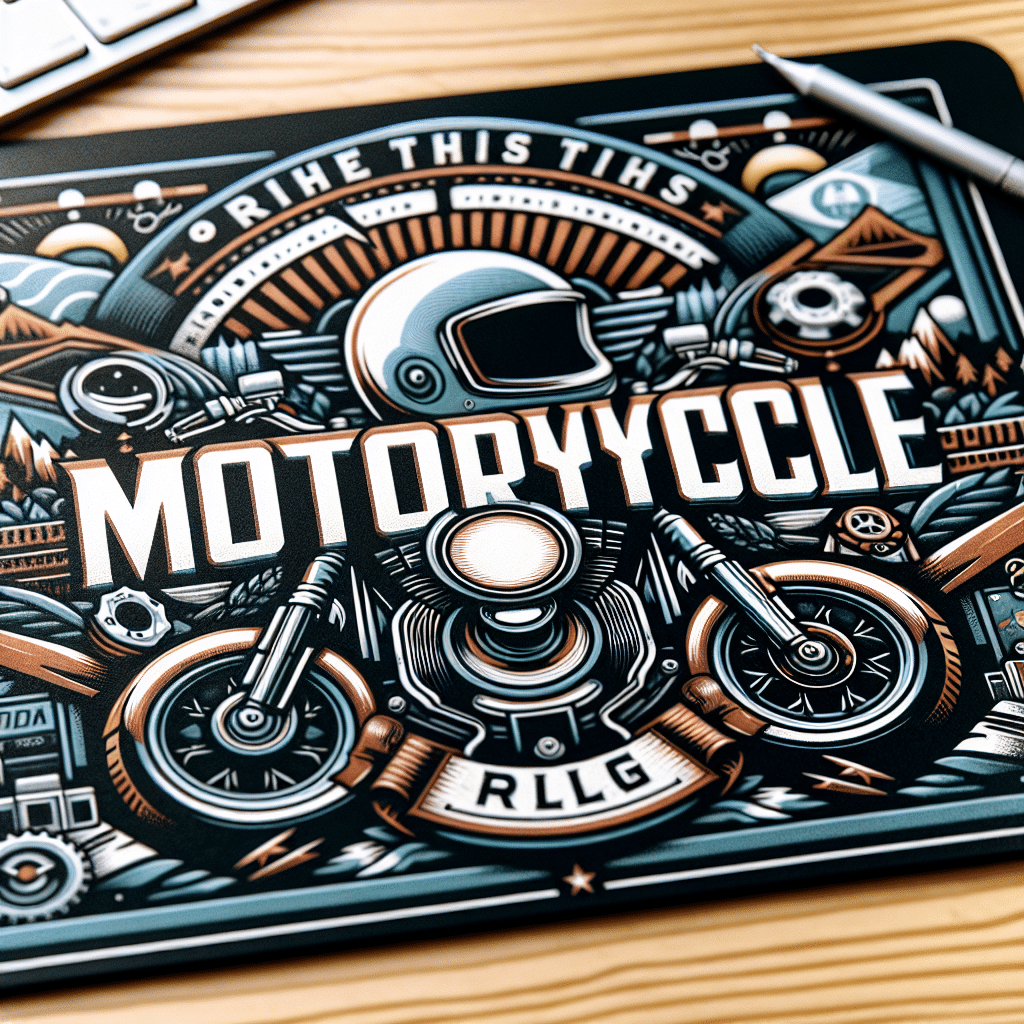Understanding Your Brand Identity
Digging Deep into Your Business Persona
Let me tell you, your logo is like the first handshake people get from your brand. It’s super essential to know who you are before you even think about slapping together a design. Spend some time figuring out your core values. What’s the vibe of your motorcycle business? Are you going for something sleek and modern, or perhaps a rugged, old-school feel?
It’s also important to understand your target audience. Are your customers seasoned riders who appreciate traditional designs? Or are you aiming at a younger crowd who prefers something edgy and innovative? Brand identity isn’t just a buzzword; it’s the foundation of a killer logo.
After you’ve nailed down your identity, jot down a few keywords that encapsulate what you want your brand to convey. This clarity will serve as a compass when you’re brainstorming logo concepts down the line!
Researching the Competition
Another key piece of advice is to check out your competition. This isn’t about stealing ideas, but rather gaining inspiration and understanding market standards. Look for both local and online motorcycle businesses; take note of what works and what doesn’t. What color schemes are popular? What kind of logos stand out?
Do a little detective work to analyze their branding strategies. If you see loads of wings and tire tread motifs, ask yourself, “How can I differentiate my brand while still appealing to this audience?” A unique logo will set you apart and make a lasting impression.
Keep a notebook handy for any ideas that pop up while you research. Inspiration isn’t always a planned affair, so capture those sparks when they hit!
Cultivating the Right Color Palette
When it comes to colors, it’s not just about what looks good; colors evoke emotions and convey messages. A bold red might scream adventure, while a deep blue can emanate trust. Think about what you want your logo to convey. Are you aiming for edgy and fast? Maybe consider blacks and metallics. For a community-oriented vibe, softer hues might resonate better.
Once you’ve sorted through your initial choices, test how different colors mesh together. Websites and apps like Coolors are great for creating harmonious color schemes. Play around and see what feels right for your motorcycle brand!
And don’t forget about color accessibility! Keeping in mind how people with color blindness perceive colors can really make your logo more inclusive, which is definitely something to strive for.
Sketching and Conceptualizing Ideas
Turning Ideas into Rough Drafts
Alright, enough chit-chat. It’s time to grab a sketchpad and get to work! Start doodling based on everything you’ve learned about your brand identity. Don’t hold back here—let your ideas flow freely, even if they look a bit funky at first. Some of the best logos emerge from seemingly random sketches.
Try creating several variations using different fonts, symbols, and layouts. Don’t forget to think about how well the design stacks up in different sizes; a logo needs to be adaptable! Keep your sketches flexible and fluid until you start to see something that feels just right.
Don’t be afraid to step away from your sketches for a moment. Sometimes the best ideas come when you’re not actively trying to force them. Take breaks and let your subconscious work its magic!
Feedback: The Key to Refinement
Got some sketches you’re proud of? Awesome! Now it’s time to get some feedback. Share your work with close friends, family, or even fellow motorcycle enthusiasts. It’s crucial to get other eyes on your designs. They may catch things you didn’t think of, like readability or appeal.
Once you gather feedback, take it to heart but don’t feel pressured to act on every comment. It’s your brand, after all! Choose the insights that resonate most with your vision and use them to refine your designs.
Feedback loops can be invaluable. Consider sharing your updated designs a couple of times to iteratively improve until you land on a logo that feels just right.
Finalizing Your Logo Design
You’ve done the work—now it’s time to polish your logo to perfection! There are numerous tools and software options available to help you create a digital version of your sketch. Canva and Adobe Illustrator are popular choices, each with unique features that can enhance your design.

When digitalizing your logo, pay special attention to alignment, symmetry, and overall aesthetic balance. Ensure that it’s scalable and identifiable at any size, whether it’s on a business card or a billboard.
Before you call it a day, test your final logo mock-up in various applications—think social media profiles, merchandise, or print materials. This will give you a solid idea of how your logo performs in the wild!
Developing a Brand Style Guide
The Importance of Consistency
So, you’ve got a killer logo, now what? Well, introducing it consistently across all platforms is key. A brand style guide is a nifty way to keep things consistent. Document guidelines for your logo usage, starting colors, font choices, and imagery style. This will make sure anyone creating materials for your business knows how to represent you correctly.
With a style guide, you ensure consistency in branding efforts, which helps build trust with your audience. When people see a well-rounded brand, they’re more likely to engage with it over time. If they feel comfortable with what you present, they’re more prone to return!
Don’t forget to share this guide with anyone involved in your marketing efforts. This can streamline your visuals across printed materials, websites, and social media, presenting a united front to your audience.
Growing Your Brand Beyond the Logo
Your logo isn’t the be-all and end-all; it’s just the starting point of your branding journey. Think about how to extend your branding into other areas, like your website, social media content, and even physical locations. This cohesive branding approach strengthens recognition.
Utilize your logo’s design elements throughout your other marketing materials, creating a blend that ties everything together. Consistent visuals help establish your brand in the minds of your audience and keep them coming back for more.
Involve your community—engage on social media, share your story, and invite feedback on future designs or promotions. Keeping that line of communication open builds a loyal following that loves what you do.
Adapt and Evolve
Lastly, keep in mind that your logo and branding aren’t set in stone. Trends change and businesses grow, and it can be exciting to adapt your logo to fit new visions or directions of your brand. Perhaps after a few years, you might want to modernize your look or refresh your branding altogether!
The key is to stay in touch with your audience’s wants and needs as well as your own business goals. Don’t fear change; embrace it! Regularly revisit your brand’s aesthetic and be open to making changes that keep you relevant.
In short, a good logo is a solid foundation, but it’s your ongoing commitment to your brand that really makes it thrive!
FAQ
1. Why is a logo important for my motorcycle business?
A logo is essential for your motorcycle business because it helps establish your brand identity and builds recognition. It’s often the first impression potential customers have, so making it memorable is key!
2. How can I differentiate my logo from competitors?
To differentiate your logo, research your competitors’ designs and aim to highlight what makes you unique. Consider unique symbols, alternative styles, and color palettes that sets you apart while still appealing to your target audience.
3. What tools can I use to design my logo?
Some popular tools for designing logos include Canva for beginners and Adobe Illustrator for those with more design experience. Both offer a range of features to create professional designs!
4. Should I hire a professional designer for my logo?
It depends on your budget and experience! If you feel confident in your design skills, go for it! But hiring a professional can save you time and likely result in a more polished final product.
5. How often should I revise my logo or branding?
There’s no hard rule! Generally, it’s wise to revisit your branding every few years or if you notice significant changes within your business or industry trends. Keeping your brand fresh can help maintain customer engagement.


